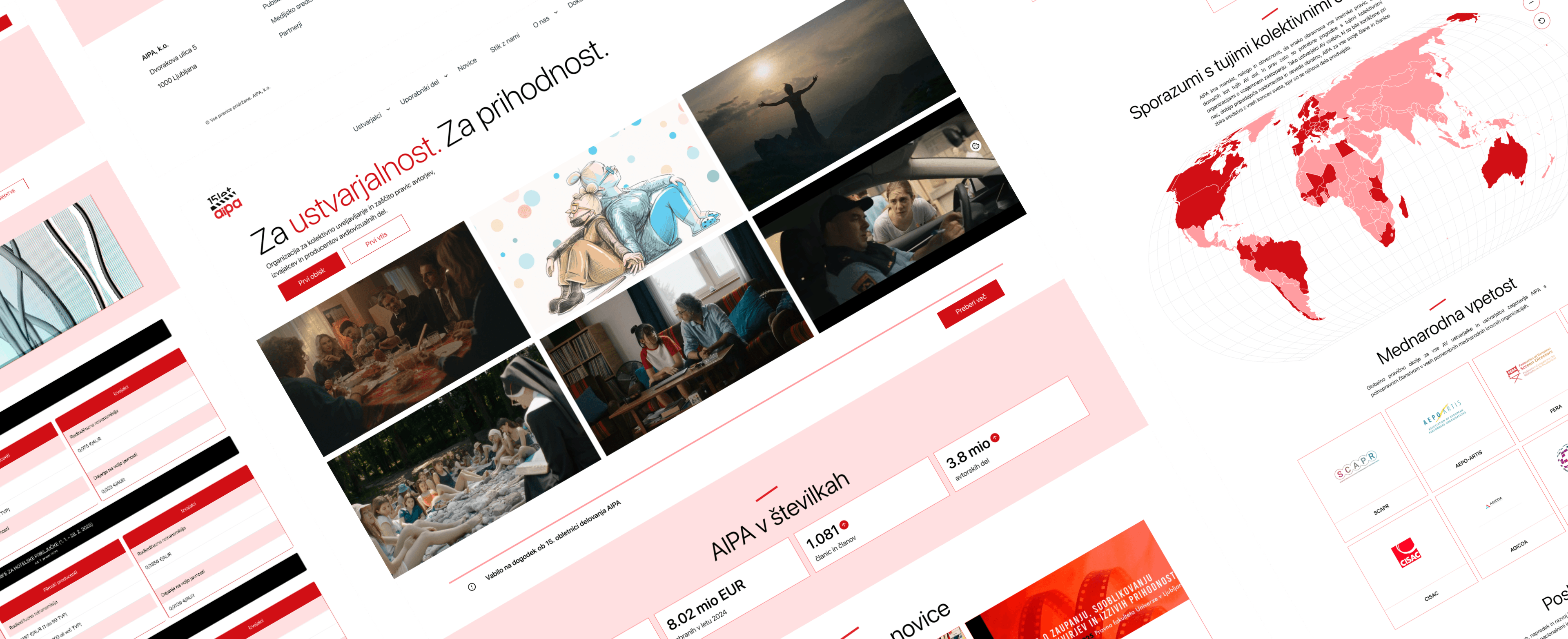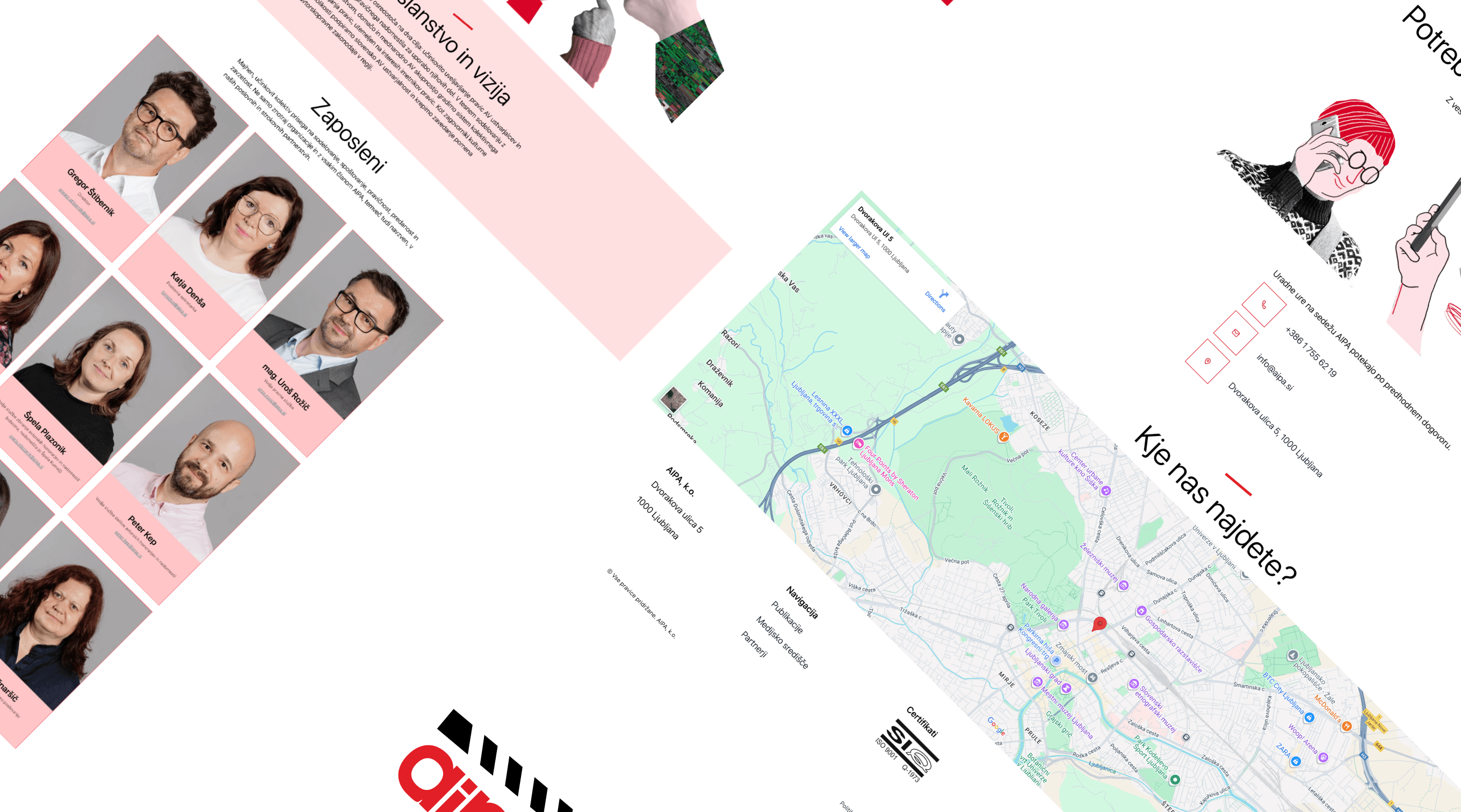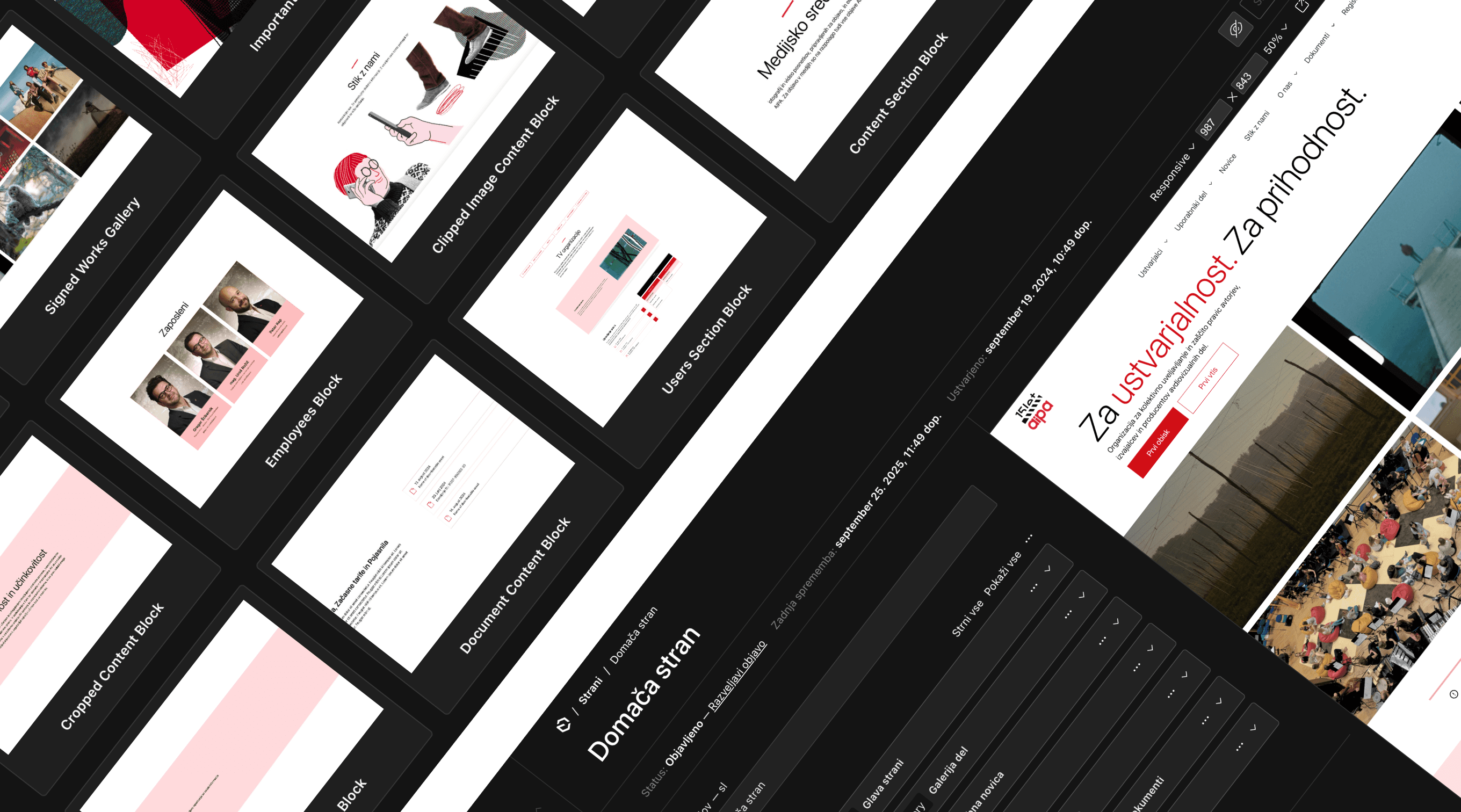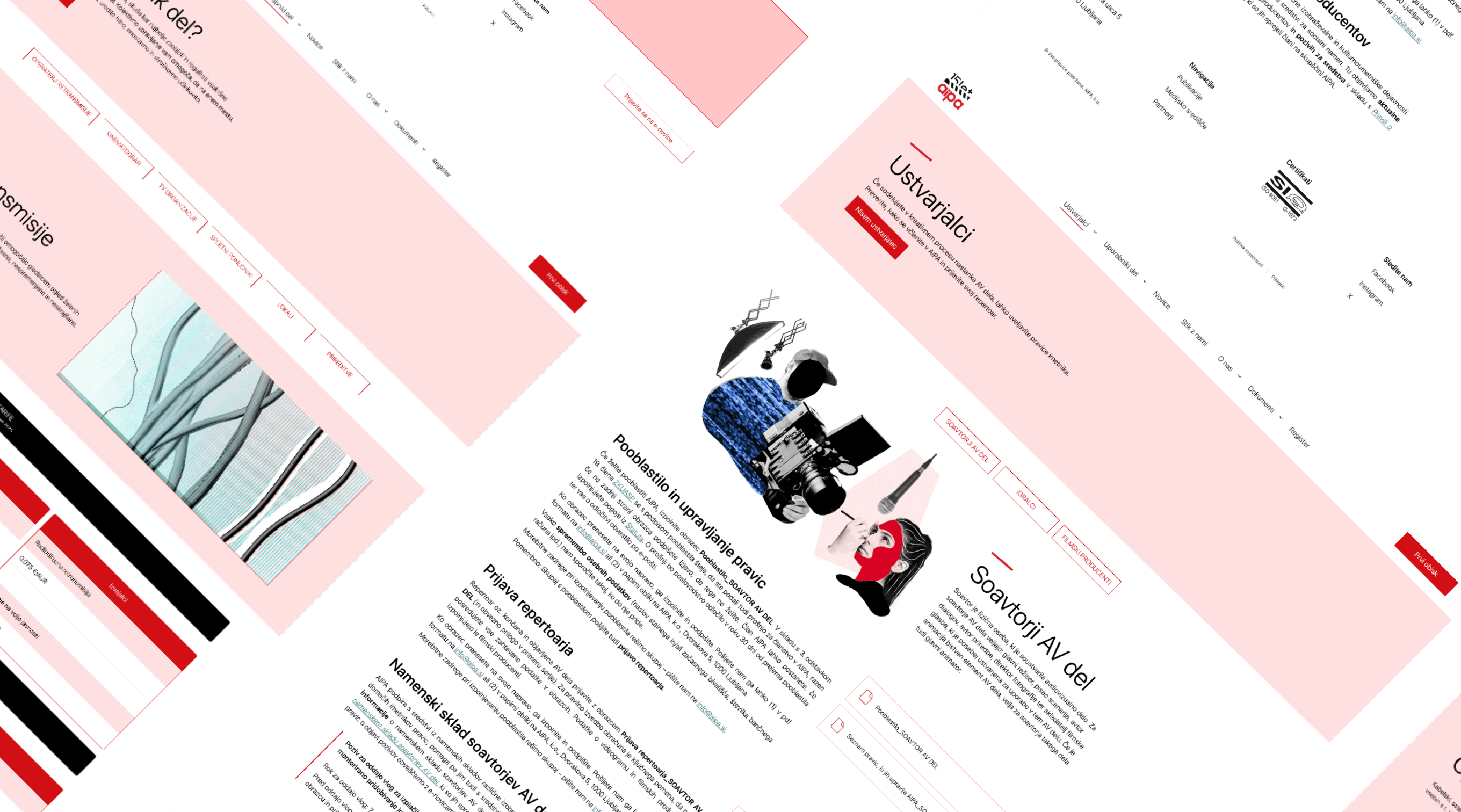Open inner menu
30. oktober 2025
Creating a Custom Platform to Revolutionize User Experience and Content Management
50% Faster access

Client: Aipa k.o
Product: Web Applications
Provider: Codeif
Author: Etjen Kavčič
Introduction
The client’s platform faced several challenges in terms of usability and scalability. While the system was functional, there were key areas that required improvement to enhance user experience and streamline content management. The mobile version wasn’t fully optimized, many features and content were not mobile-friendly, the navigation system needed refinement, and the content management system (CMS) had limitations that impacted both ease of use and future scalability.
Additionally, the platform initially lacked an introduction on the homepage to clearly explain what the company does and the problems it solves. This left new users unsure about the platform’s purpose and how it could benefit them.
To address these issues, we redesigned the platform with a focus on delivering a seamless mobile experience, enhanced navigation, a modern CMS, and a navigation wizard to guide users to the content they needed. The result? A faster, more intuitive platform designed to accommodate future growth.

Improving Navigation Efficiency
Problem:
Users encountered difficulties locating documents and resources due to an unclear navigation structure. There were no distinct pathways for different user types (e.g., basic users, work segment users, or creators). As a result, users had to sift through a single page to find relevant documents, leading to longer document retrieval times.
Solution:
We implemented several improvements to streamline the navigation process:
- On-Page Navigation: Intuitive on-page navigation elements were added, allowing users to quickly jump to the relevant sections within the same page, significantly improving the speed of document retrieval.
- User-Specific Pages: Dedicated pages were created for different user types (e.g., creators, users of works, and basic users). Previously, all user types shared one page, leading to confusion and clutter. This separation made it easier for each user group to find the resources they needed.
- Clear User Pathways: Creators and work segment users were clearly identified and separated in the navigation. Dedicated tabs within the navigation now allow users to instantly access the pages most relevant to them, eliminating the need to search through a mixed layout.
Use Case:
A user of work trying to locate specific tariffs or documents can now navigate directly to a dedicated page with relevant content. Thanks to the new tabs and on-page navigation, they can easily select their category. As a result, users can now find documents 50% faster than before..
CMS Limitations
Problem:
The platform's CMS was functional but had a few limitations that affected user experience and scalability, such as:
- No preview options (live or draft) for admins to visualize changes before publishing,
- Limited scalability and flexibility for future updates,
- Basic content formatting requires the use of HTML tags,
- Limited section customization.
Solution:
We upgraded the custom made CMS to Payload CMS, which offered modern features and improved scalability:
- Live and Draft Previews: Administrators can now preview changes before publishing, enhancing accuracy and efficiency.
- Rich Text Editor: The Lexical Editor was introduced, allowing admins to style content easily without needing to use HTML tags.
- Scalable and Regularly Updated: The platform benefits from a CMS that is regularly updated, ensuring long-term flexibility and future growth.
Custom CMS Components: We also created modular components within the CMS, enabling users to add new sections and reorder existing sections without breaking the platform’s design. This feature gives administrators greater flexibility and control over content organization while ensuring consistent design across the platform.

User Guidance
Problem:
Users often struggled to understand how to get started or navigate the platform, leading to frustration, especially for new users.
Solution:
We implemented a navigation wizard to help users find their way:
- Self-Identification: The wizard asks users simple questions to identify their role (e.g., work segment user, creator, or basic user) and guide them to the relevant content.
- Tailored Navigation: Based on the user's responses, they are directed to the sections of the platform most relevant to them.
- Ease of Use: The wizard is prominently displayed on the homepage for quick access.
Use Case:
A first-time user who is unsure where to start can now use the wizard to identify their needs. For example:
- A creator is directed to tariffs for using data,
- A work segment user is guided to specific documents,
- A basic user is shown the main services or resources.

Mobile Experience Optimization Problem
Problem:
The mobile version of the platform had several features and elements that weren’t optimized for mobile devices, including:
- Navigation that wasn’t fully adapted for smaller screens,
- A design that needed adjustments to improve accessibility and usability on mobile.
Solution:
We focused on making the platform fully mobile-responsive to ensure it worked seamlessly across all devices:
Mobile-First Design: Introduced intuitive layouts and touch-friendly navigation to make accessing documents and data effortless.
Users accessing the platform can now find critical data with just a few taps. This change made the platform significantly more efficient and user-friendly
Conclusion
The redesign of the platform has successfully addressed the critical challenges of usability, navigation, mobile optimization, and content management. By focusing on these key areas, the platform is now more intuitive, efficient, and scalable, offering a seamless user experience for both administrators and end-users.
- Mobile Optimization: The platform’s mobile-first design has made it more accessible and user-friendly across all devices, leading to improved mobile engagement and ease of use.
- Navigation Efficiency: With intuitive on-page navigation, dedicated user-specific pages, and clearer pathways for different user types, document retrieval time was significantly reduced by 50%, making the platform much more efficient.
- Modern CMS: The upgrade to Payload CMS introduced features like live and draft previews, the Lexical Editor, custom components and enhanced scalability, streamlining content management and ensuring the platform can grow with future demands.
User Guidance: The introduction of the navigation wizard has greatly improved the user experience, helping new users quickly identify their needs and find relevant content.
